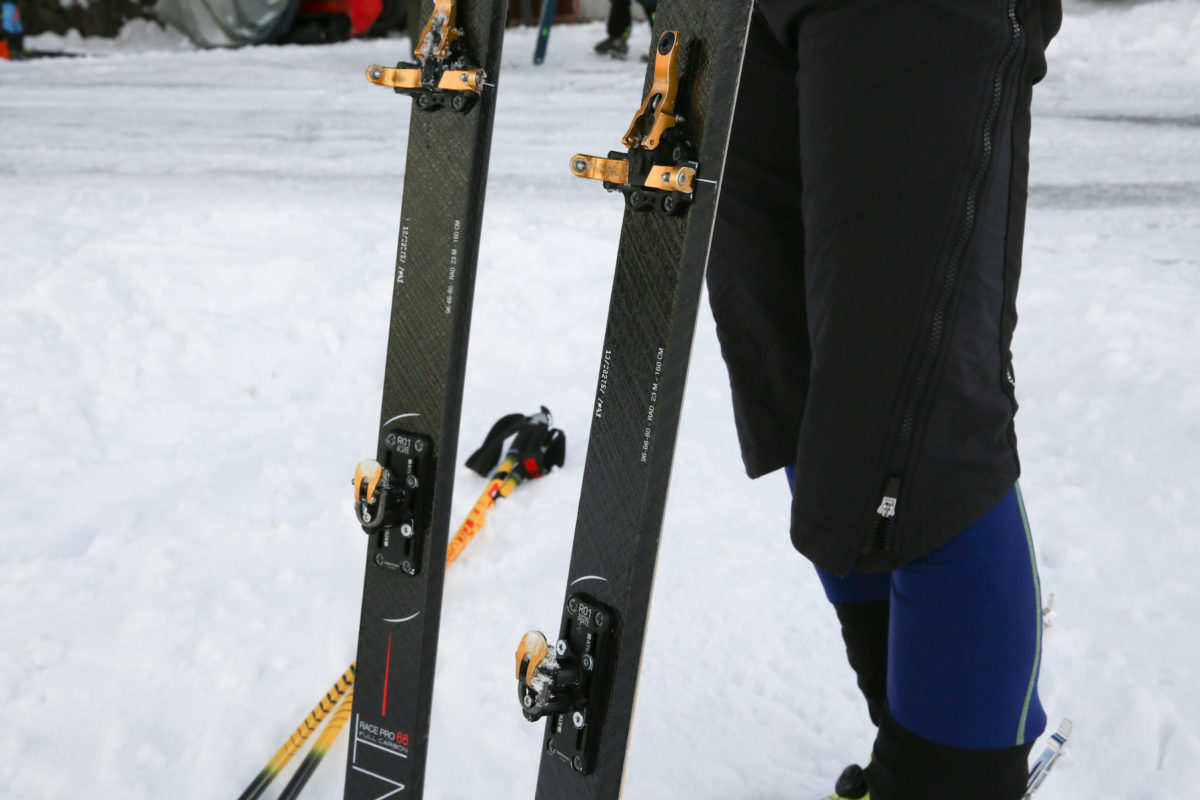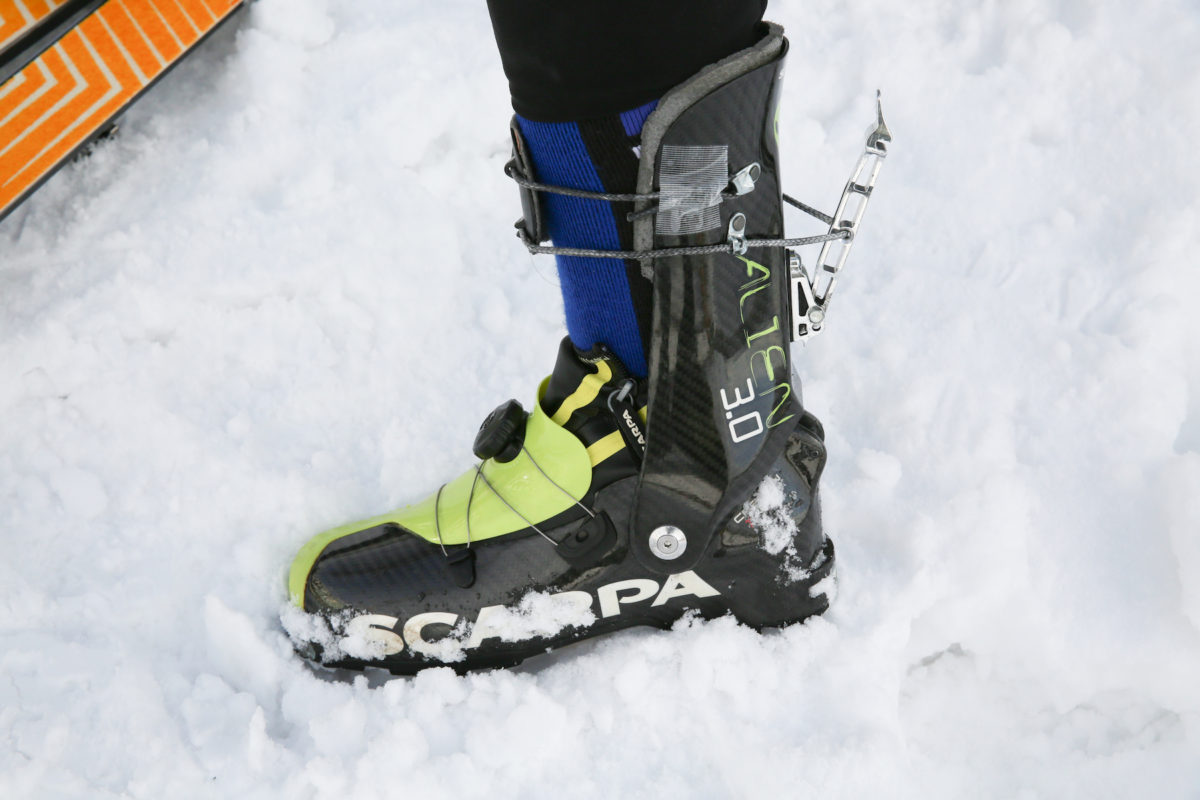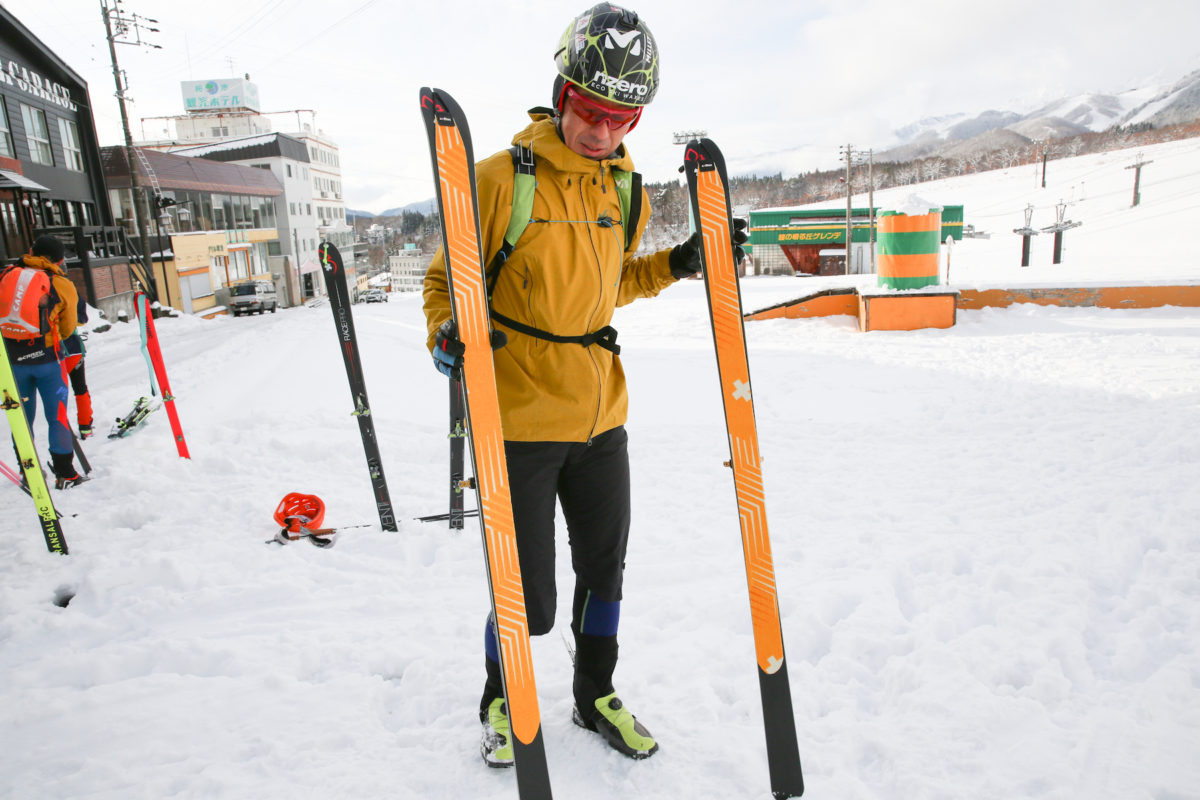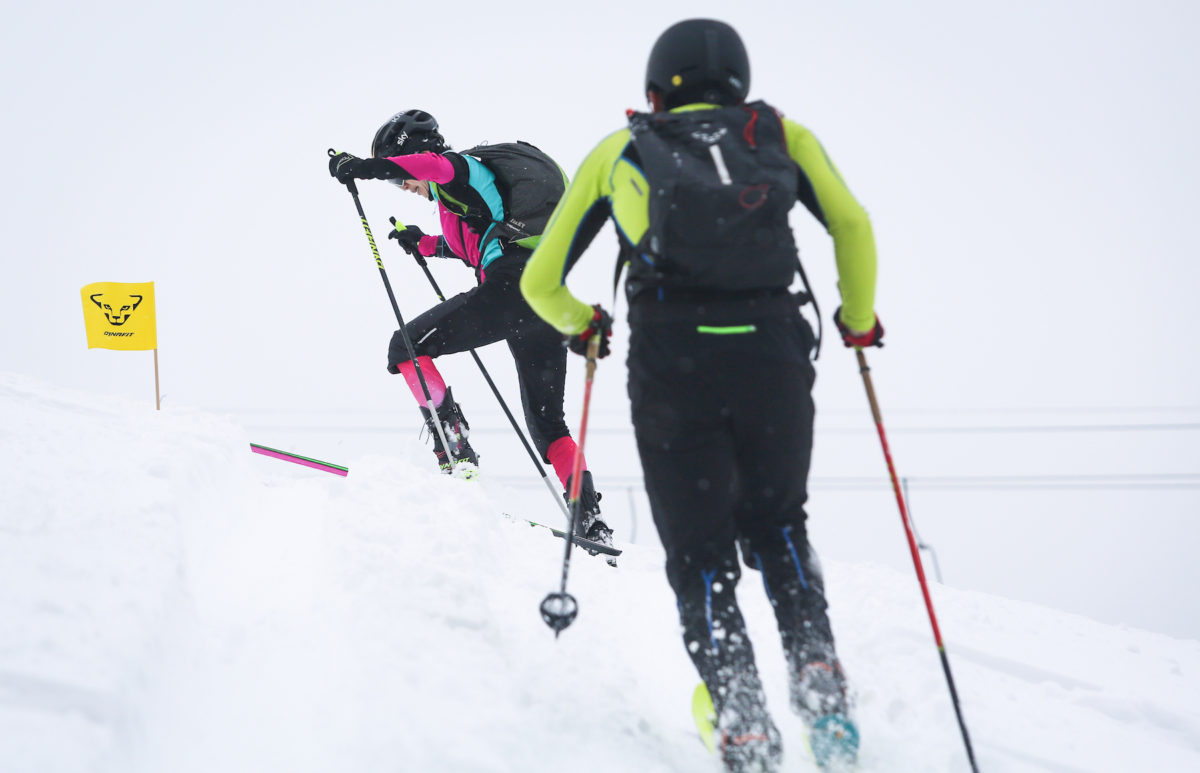Skimo is attracting attention as it will be added to the 2026 Milan/Cortina Olympics (Italy).
Some of you may have heard the name, but don't know what kind of sport it is, or maybe it's the first time you've heard of it.
The official name is Ski Mountanneering, abbreviated as Skimo. I would like to see the content and rules of this sport and its appeal.
What is Skimo
Skimo is a sport that climbs and slides on snowy mountains and competes for speed to the finish line. It may be easier to understand if you think of backcountry skiing, which you usually enjoy, as a sport where you compete for time from climbing to sliding down. The course is set up at the gate for both climbing and sliding, and you can run through the snowy mountains with three running methods for each section: walking with a sticker, climbing a slope while carrying a board, and sliding in alpine mode. Comprehensive skiing skills and physical strength determine victory or defeat.
race to be competed
The types are divided into the following four types.
1) Sprint
" Short-term decisive battle competition "
A course of about 3 minutes to 3.5 minutes is set, including climbing a slope with a sticker on a slope with an altitude difference of about 70m, removing the skis and walking uphill, and skiing downhill. A fast-paced competition. The sprint is the sport that will be contested at the Milan-Cortina Olympics.
②Individual
"Trail running on snow" This is a race mainly conducted on off-piste, with a total elevation difference of 1,300-1,600m for men and 1,150-1,400m for women. The race time is 1 hour 15 minutes to 1 hour 30 minutes, and it is a dynamic competition that goes up and down the mountain many times.
③Vertical
“
Compete for climbing time only” As the name implies, this is a competition where only the climbing time is contested, climbing a course with an altitude difference of about 500 to 700m at once. Time will be around 40 minutes.
④ Team
“Relay in which teams of several people compete” A competition in which two or three people climb together. Courses longer than Individuals are set.
It's easier to understand if you watch the video of the actual competition. Let's take a look at the sprint competition of the All Japan Championship held at Unazuki Snow Park in January 2022.
As you can see from the video, it is necessary to move forward as quickly as possible with sophisticated movements such as how to walk, how to put stickers and skis, and how to slide. Also, if you look closely, the players are carrying backpacks. This includes beacons, probes, shovels, and other equipment needed on snowy mountains. In the backcountry, it is essential to carry it under Skimo's competition philosophy of how to slide safely and as fast as possible. In addition, there are detailed rules such as penalties if the sticker pops out when the sticker is put inside the wear, or if the zipper of the wear is not completely closed and slips. This is because the premise is that it is a competition to safely slide down the snowy mountains.
Gear used in Skimo
The tools are also light because they compete for speed.
For example, the ski itself weighs 600-700g per leg, and the binding weighs only 100g. This lightness is achieved by using lightweight materials, but it may break during gliding.

Lightness is the biggest feature Left) Dynafit DNA PRO 162cm|690g|132,000 yen
Middle) Dynafit MEZZALAMA BOOTS 875g|121,000 yen
Right) Dynafit DNA+ 128g|116,600 yen
Not only is the boot thinner overall, but the tongue is also simplified.
When it comes to racing, it's even lighter and the tongue part is gone. And the price soars. The seal is also extremely short, and the seal clip on the tail side is omitted. It is simplified by leaving it stretched once it is attached to the nose. This allows you to remove the seal while wearing the skis and quickly transition from tour mode to alpine mode. It's also interesting to see Skimo's stripped down gestures and gear.

Skis that are light enough to be lifted with one hand


To fill the gap with overseas
Skimo is a sport that originated in Italy. It is a popular sport in Switzerland, France, and Italy, and has a large number of players. At the 2026 Milan/Cortina Olympics, the sprint will be contested by 18 men and women from around the world, but quotas for each country have not yet been decided. Since the number of participants is limited, there may be quotas for each region, such as Asia, Europe, and America. In that case, neighboring China will become the biggest rival first.
In Japan, it is a sport that is still in the future. However, Japan's ace, Tokutaro Shima, participated in the World Cup held in France for the first time, and Shima passed the qualifying round in 52nd place with a time of 3 minutes 17 seconds, compared to the French player who qualified first in 2 minutes 46 seconds. Thirtyth place on the line was 17 seconds away from 3:00. Although there is still a gap between the world and the power, depending on the training from now on, it is realistic to pass the qualifying in the near future, and it was a result that saw a ray of light.
"The big difference with overseas players is power and sliding technique." That's what Yukiyasu Matsuzawa, the head coach of the Japan national team, said. Sprinting, which is an Olympic event, is contested in a short competition time, so endurance is of course important, but climbing speed, in other words power, is also an important factor. In addition, there are an increasing number of cases overseas where athletes who originally acquired skills in alpine races are switching to Skimo. Athletes with not only physical strength but also high skating skills will be a further threat. If overseas athletes have a long history of competition, they have the advantage of being able to train at high altitudes because they have plenty of practice and snow if they go to high altitude mountains.
It is undeniable that there is a difference between Europe and Europe in terms of physical fitness and skating technique due to differences in experience, practice environment, and physique. So what does Japan need to do to improve its ranking?
“In Japanese track and field, the relay is strong. That is because I have practiced many times and have become good at passing the baton. Skimo also has a physique difference with overseas athletes, so switching running methods is sure to shorten the time. It's the transit part.I think Japanese people are good at small things like carrying skis, putting on skis, and taking off stickers.Overseas competitors are also fast, but if you get down to it, it's the part where you can win.Basically, However, I still have a lot to teach the inexperienced Japanese players,” says Matsuzawa.
In order to acquire the necessary experience and basic movements, the first Japanese training camp in Japan was held at Tsugaike Mountain Resort in Hakuba from December 16th to 18th. The editorial department attended the training camp for one day. It turns out that Skimo is a much harder sport than you might imagine.

